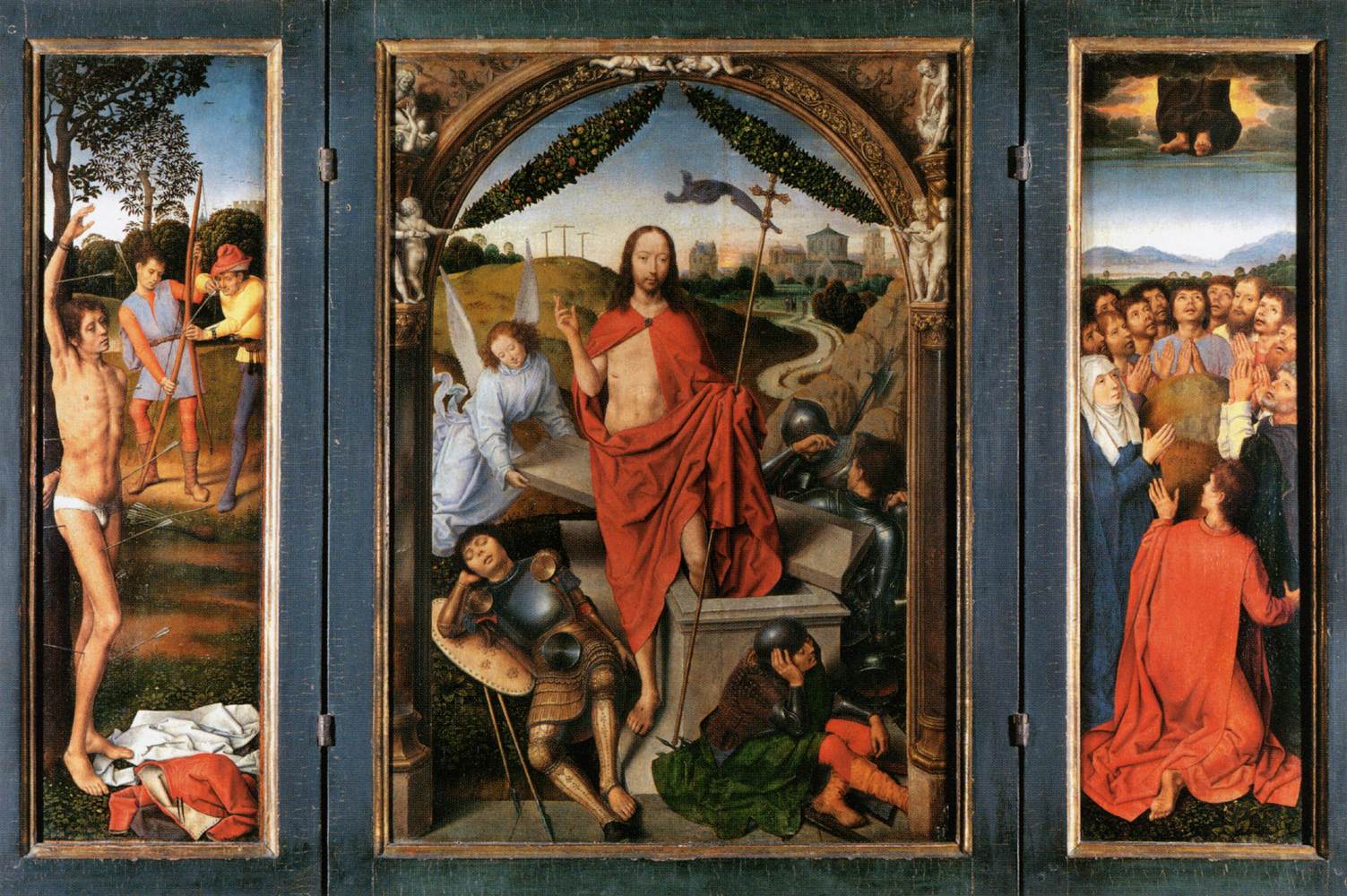From the Libellus de Supplemento of Tomasso Antonio Caffarini, disciple of Saint Catherine of Siena (Part 3, Tract. Ill, ed. Cavallini-Foralosso, Rome 1974, pp. 305-16) On the death of Saint Catherine of Siena
On the Third Sunday of Lent, the holy virgin Catherine was completely confined to her bed with sickness because of the great pain that grew in her small frame day after day, and because of the great mental fatigue with which she was afflicted for the offenses against God that she saw being committed by believers in Christ every day. Furthermore, she suffered much both inwardly and outwardly because of the dangers that she saw daily growing within the holy Church.
She remained in this state until the Sunday which preceded Ascension Day of that year, which was April 29, 1380. On that day, about two hours before daybreak, the holy virgin took a noticeable turn for the worse. It was determined to give her the Sacrament of Anointing, and so it was done.
After she had received the Anointing, the virgin remained in the same state and seemed to feel nothing. After a short time, she appeared to be completely changed. She gestured wildly with her arms, and made even more agitated movements with her face. It seemed as if she were afflicted by a great multitude of demons, and the virgin resisted in this cruel battle for another hour and a half.
Afterwards, her face was completely changed in an instant. It went from appearing clouded and in anguish to being pleasant and angelic. Then we showed her an image covered with many relics of saints, and other images that were just as beautiful. She immediately fixed her attention on the image of the Crucified. With her bodily eyes looking upon the Crucified Christ, she began to pray more intently, by speaking of the deep goodness of God.
Later, in her prayer she began to confess her sins in the presence of God, even though other people heard them. She spoke of her faults and sins in a general fashion, and then added other sins in particular, saying: "O eternal Trinity, it is through my fault that I have offended you most grievously in my great negligence, ignorance, ingratitude, and disobedience, and in other ways. How wretched I am . . ." And so, this most pure dove unburdened herself of her sins and of all of her many other transgressions. It seemed that this was happening by the disposition of the Almighty more as an example for the benefit of those standing by her than by reason of her own necessity.
After she continued in prayer for some time, the virgin turned to us. She spoke of the way of perfection briefly and instructed each one individually about what ought to be done after her passing. She asked pardon and forgiveness most humbly for the small amount of concern she felt she had shown for our salvation. Oh, if one could have seen with what reverence and humility the sacred virgin received often that benediction from her own afflicted mother, standing by her and weeping with the rest!
She interrupted this prayer rarely, and when she had come to the end of that singular prayer that she was making for the holy Church, she affirmed that she was handing over her bodily life powerfully on its behalf. Then she prayed for Pope Urban VI, whom she affirmed with great effect to be the true Sovereign Pontiff. She even strengthened her sons concerning how they ought to lay down their lives for this truth, should that be necessary. Finally, she prayed with great fervor for all of those men and women who were her special children in the Lord, using the many words that the Savior used when he prayed for his disciples to the Father immediately before he was to pass over to him. When her prayer was finished, she blessed us all by making the Sign of the Cross.
So, she came even closer to that goal that she had desired with such intensity for such a long time. Persevering constantly in her prayer, she called out to him who was both her Lord and her Spouse, "O Lord, you call me and I am coming to you. Behold, I am coming to you not because of my own merits, but only by your mercy, which I ask you to give me in virtue of your blood." At last. she cried out in loud voice over and over, saying: "The blood! The blood!" She ended by saying the words of our Savior, "Father, into your hands I commend my spirit." With a face wholly angelic, she bowed her head and sweetly gave up her spirit.













